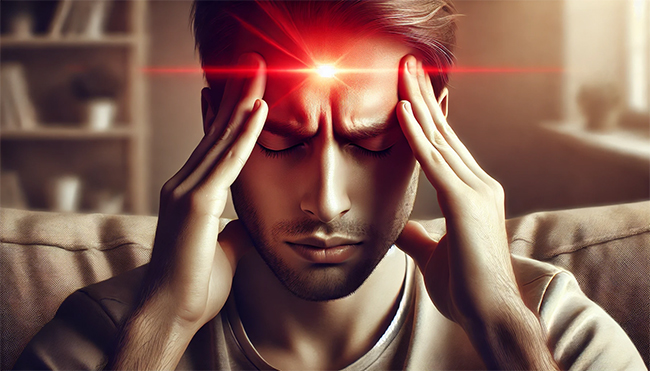by Marvin Ramírez
Migraine is a neurological disorder that affects more than a billion people worldwide. It is characterized by recurrent and disabling headaches, accompanied by nausea, vomiting, and sensitivity to light and sound. Its impact on daily life is significant, interfering with work, personal relationships, and general well-being. Due to its high prevalence, experts consider it a silent epidemic.
While its exact causes are not fully understood, it is believed to be the product of genetic and environmental factors. “More than half of people with migraine have close relatives who also suffer from it,” say specialists from Merck Manuals, which reinforces its hereditary component.
Triggers and their impact
The main triggers include hormonal changes, stress, lack of sleep, and certain sensory stimuli. “Fluctuations in estrogen levels can trigger episodes in many women,” explains the Mayo Clinic. This makes them more prone to migraines than men, especially during childbearing years.
Stress and anxiety also play a role. “The body responds to stress by releasing hormones that can alter blood flow to the brain, causing an attack,” say neurology experts.
As for diet, some foods and drinks are linked to the onset of migraines. “Chocolate, red wine, aged and processed cheeses can act as triggers,” warns MedlinePlus. Foods rich in histamine, such as sausages and certain fish, can also be harmful to sensitive people.
Treatment and relief options
Treatment varies from person to person. In medication, triptans are the most commonly used. “Sumatriptan and rizatriptan block pain pathways in the brain and relieve symptoms,” explains the Mayo Clinic. However, they can have side effects and their use should be supervised by a doctor.
In addition to medication, there are alternative therapies. One effective option is acupressure. “Applying pressure to the base of the skull or between the thumb and index finger can reduce the intensity of the pain,” MedlinePlus recommends.
Using hot or cold compresses is also helpful. “Cold compresses numb the area, while hot compresses relax tense muscles,” adds the Mayo Clinic. Wearing tight bands around the head to reduce the feeling of pressure has also become popular.
Therapeutic massages help release tension and improve blood circulation. “Massage in the cervical area can decrease the frequency of episodes,” say physical therapy experts. Chiropractic has also been shown to be helpful in correcting misalignments in the spine. “By improving the balance of the nervous system, the severity of migraines can be reduced,” explains the American Chiropractic Association.
The Importance of Prevention
Prevention is key to reducing migraine frequency. Maintaining a balanced diet and avoiding prolonged fasting helps stabilize blood sugar levels. “Not letting more than three hours pass between meals can prevent migraine episodes,” suggests Alimmenta.
Hydration is also essential, as dehydration can be a triggering factor. Getting a good night’s sleep is another crucial aspect. “Maintaining a regular sleep schedule and avoiding screens before bed can significantly reduce episodes,” say neurology specialists.
Comprehensive approach to migraine management
Experts agree that migraine should be addressed with a comprehensive approach. Yoga and meditation help reduce stress and improve the body’s response to triggers. “Meditation relaxes the nervous system and can reduce the intensity of episodes,” notes a Harvard Medical School study.
Moderate exercise can also be beneficial. “Activities such as walking or swimming improve circulation and reduce stress without causing attacks,” health specialists explain.
Although migraine has no definitive cure, there are multiple strategies to control it and improve quality of life. From dietary changes and stress reduction to manual and pharmacological therapies, each patient can find a personalized approach to cope with this debilitating condition.



